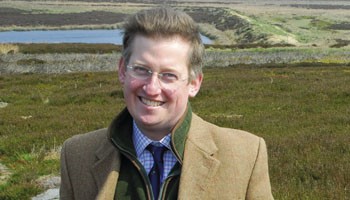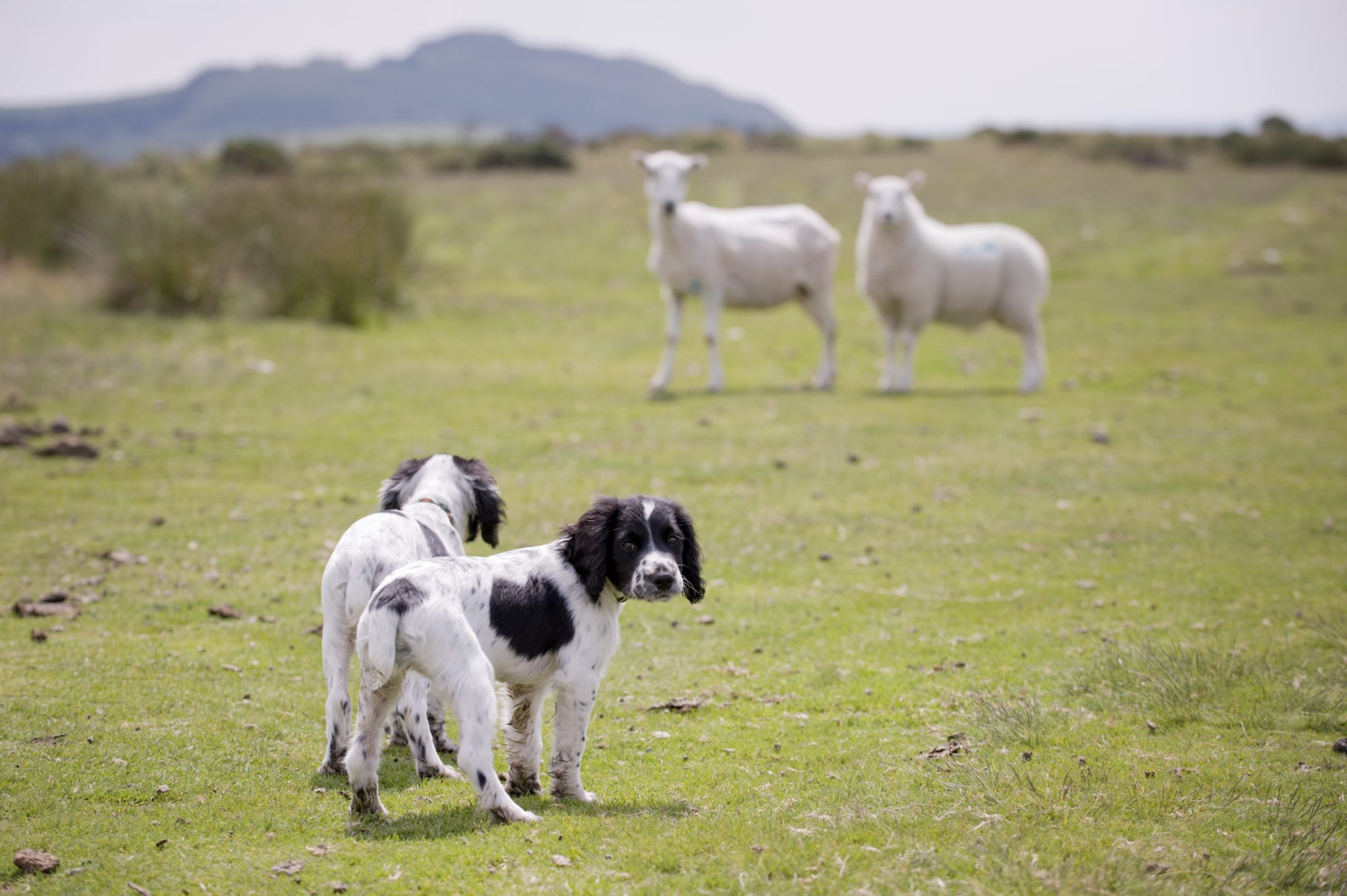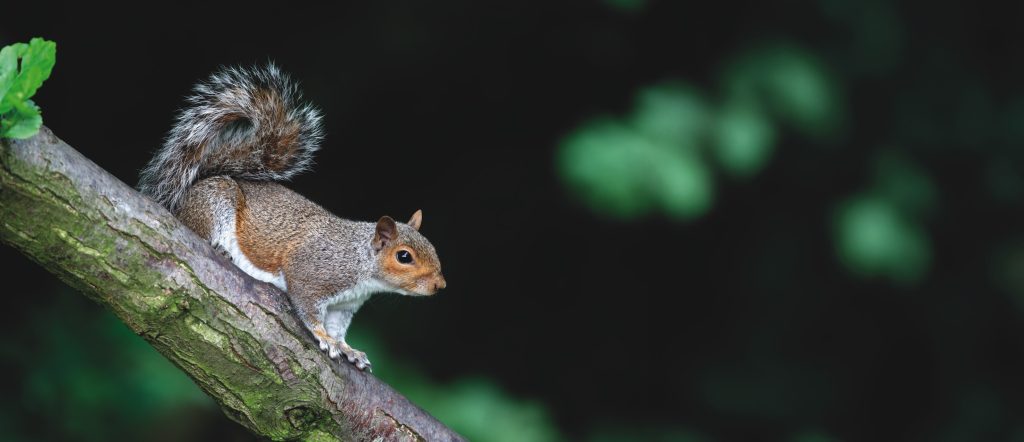Win CENS ProFlex DX5 earplugs worth £1,149 – enter here
Fighting for a moorland future
Charlotte Lycett Green meets the Morland Association's chairman to find out what the organisation is doing to solve the sensitive raptor problem

The Moorland Association has been in operation for nearly 25 years and last May its third and youngest chairman, Edward Bromet, was appointed at the age of 39. A passionate grouse Shot, he followed his father and grandfather on the moor and was in the enviable position of being given a share in a West Yorkshire grouse moor at the age of 18 the management of which he has been in charge of since 1997. Edward has been a committee member of the Moorland Association since 2001, representing the South Pennines during that time, and
now as part of his position as chairman he is committed to the process of finding asolution to the hen harrier and grouse management problem that constantly attracts such negative press for the sport.
As the representative body for grouse moor owners in England and Wales, the Moorland Association concentrates on reversing the loss of heather moorland through responsible management and highlighting the economic and biodiversity benefits of moorland that is managed for grouse shooting. As such, it is ideally placed to tackle the raptor issue with the aim of providing a better working environment for the keepers on the ground, while demonstrating that the shooting community is at the forefront of conservation.
When Edward took over as chairman he visited many of the moor owners individually and the subject of grouse predation by birds of prey, and hen harriers in particular, was discussed in earnest. So, having consulted with the associations members, Edward is confi dent of their support for finding a solution to the increasing pressure from hen harrier predation. It is essential that we dispel any image that grouse moor owners and their keepers are carrying out wildlife crimes with total disregard to the law, because theyre not, he said. And they want to fi nd a solution to this as much as anyone else, but we cannot surrender to unlimited numbers of raptors all the economic and biodiversity benefits of grouse moor management that have been built up over 150 years. There is too much riding on it were talking about the whole viability of our heather moorlands.
This feeling was echoed by shadow minister for rural affairs Richard Benyon at The CLA Game Fair when he said that a whole new generation of keepers wanted the issue resolved and felt that it was putting some people off coming into the profession, as well as being a difficult issue for keepers day to day. A fixed solution that everybody agrees with, therefore, seems the only way to proceed.
There are some 800,000 acres of remaining heather moorland in England and Wales, said Edward, and its mainly the private investment of grouse moor owners, who own and manage 90 percent of it, that benefits the moorland we have. A recent survey conducted for the Countryside Alliance, the Moorland Association and the National Gamekeepers Organisation (NGO) showed that most people think that these areas are managed by conservation charities rather than private individuals. Its the job of the Moorland Association to ensure that we get across the wide economic and biodiversity benefits of the private investment in grouse shooting, and at the forefront of this is our effort to find workable management solutions to ensure continued economic driven grouse shooting while seeing an increase in the hen harrier breeding population and range in England.
Under this Government the role of Natural England has become significant and there is little that we can do without its consent it can cause difficulty and delay though that could change under a new government, Edward continued. One of our main roles is to ensure that our working relationship with Natural England is as good as it can be, given the circumstances, though we would like greater freedom. In its favour, however, it is Natural England that has charged the Environment Council to mediate on finding a solution to the hen harrier and grouse issue, which is a move that the Moorland Association supports wholeheartedly.
Open discussion
It is certainly a major breakthrough that Natural England at last recognises the benefits grouse shooting has to heather moorland and the species that exist there, and that it is committed to finding a solution to the problem of hen harriers and grouse co-existing without affecting the grouse moor management methods already in place. The Environment Council is a charity with professional mediators working for it who consult with all the key shooting organisations such as BASC, the Countryside Alliance (which has a dedicated moorlands officer), the National Gamekeepers Organisation, the Game & Wildlife Conservation Trust (on whose scientific evidence much of the discussion is based) and of course the RSPB, Natural England, the Hawk and Owl Trust and several others. In intensive mediation sessions that are attended by representatives from all these key groups, subjects are addressed such as the breeding productivity of hen harriers and the effect of diversionary feeding. No stone is left unturned.
The Moorland Association and the membership put our hope and trust in the Environment Council procedure where the closed discussions are frank and based on scientific fact, said Edward. Were optimistic that a result will come out of the process that will be an acceptable and appropriate solution, since in terms of economic viability and biodiversity there can be no compromise on grouse moor management as it is carried out at present, and all the organisations involved have signed up to finding a solution on these terms.
Key to the solution will be the results of the Langholm project, in particular the trials for the diversionary feeding of hen harriers, the progress of which Shooting Times recently reported on (Harmony on the grouse moor, 2 September). It is a 10-year project in its second year, so there is some way to go before a final conclusion can be drawn, but there is already evidence to support diversionary feeding.
It is likely that the Environment Council process will result in legislation of some sort, but Edward was keen to point out that the current system in Scotland, which allows keepers to apply for a licence to control certain birds of prey, did not appear to be working. The time taken to apply for and consider the licence is too long at present. By the time the licence is granted, if indeed it is, an overpopulation of harriers would have done untold damage to the shootable surplus of grouse. In its current form its not the solution to the hen harrier problem.
No grouse moor owner who wants to ensure that the economic viability of his moor is preserved would actively manage his moor to encourage hen harriers to breed there without some legal method of controlling that buildup or the number of chicks raised. The Moorland Association continues to campaign for management to agreed levels of all species for the good of those species and for the wider biodiversity and socio-economic objectives.
Shooting Times contributor and NGO chairman Lindsay Waddell attends the Environment Council meetings and said of its progress: The NGO views the process as the best route yet in providing us with a solution for our members to the problem that harriers pose to the viability of their jobs. Quite simply, no grouse after a few years equals no job for the keeper nobody is going to pay for land without return.
Its a complex issue and there is much for the Environment Council to consider. Diversionary feeding is not an uncomplicated resolution as it could contribute to the creation of unnaturally dense numbers of hen harriers if they do not have to depend on existing prey species in order to survive. It is a concept that requires further research.
There is no question, however, that all the organisations involved are moving the process forward for their members. As shooters and conservationists we are committed to improving the number of breeding hen harriers in England but also to ensuring we are preserving what we cherish and in many cases depend on
for our livelihoods.
Related Articles
Get the latest news delivered direct to your door
Subscribe to Shooting Times & Country
Discover the ultimate companion for field sports enthusiasts with Shooting Times & Country Magazine, the UK’s leading weekly publication that has been at the forefront of shooting culture since 1882. Subscribers gain access to expert tips, comprehensive gear reviews, seasonal advice and a vibrant community of like-minded shooters.
Save on shop price when you subscribe with weekly issues featuring in-depth articles on gundog training, exclusive member offers and access to the digital back issue library. A Shooting Times & Country subscription is more than a magazine, don’t just read about the countryside; immerse yourself in its most authoritative and engaging publication.







